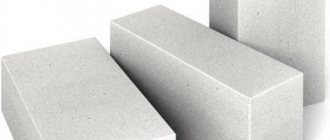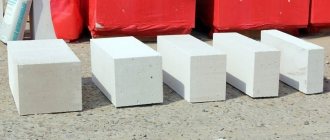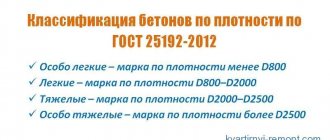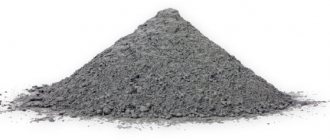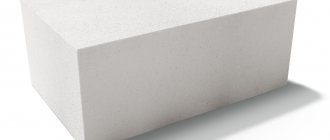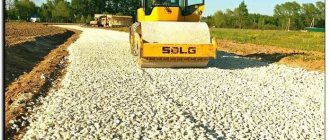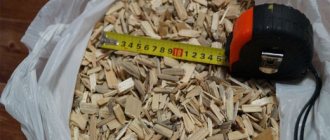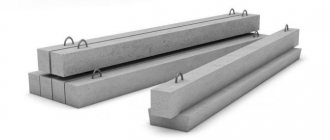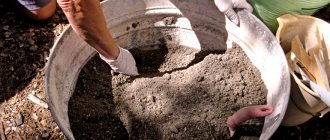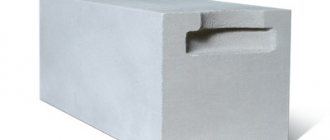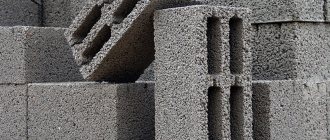Aerated concrete D500 is an autoclaved cellular concrete that is widely used in the construction of partitions for low-rise buildings and monolithic frame construction of high-rise buildings. Aerated concrete blocks of different thicknesses are relevant for creating both internal and external walls of buildings with seasonal/year-round occupancy.
The D500 aerated concrete block is produced in the shape of a rectangular parallelepiped, the geometry is preserved with an accuracy of 1 millimeter. The blocks are equipped with a tongue-and-groove system on the vertical side, which greatly facilitates and strengthens the masonry. For ease of grip, blocks are often made with special pockets, which also has a positive effect on the installation process.
Modern manufacturers offer aerated concrete blocks in a wide variety of sizes - you can select the material taking into account the desired height, thickness, length, average density, and other properties.
Aerated concrete blocks grade D500
Aerated concrete blocks of the D500 brand are made from cement, quartz sand with the addition of lime and water. The creation of high-quality blocks that meet the specifications is only possible in a factory environment. First, cement, ground quartz sand, lime and water are mixed in a special mixer, then aluminum paste is added in the required volume (it is responsible for the appearance of pores in the structure of the material).
In a humid, warm chamber, the solution increases in volume due to the formation of a large number of pores and gains its initial strength. Next, the frozen mass is transported to cutting equipment, and blocks with ideal geometry are formed. The material gains final strength in an autoclave oven, where it is exposed to high water vapor pressure and temperatures in the region of +175-200 degrees.
Thanks to the use of high temperature in production, it is possible to obtain high-quality and durable gas blocks, ensuring that they will demonstrate all the declared characteristics.
Disadvantages of gas block construction
There is no ideal building material. Each has certain advantages and disadvantages. From the point of view of a builder who has practical experience of living in a house with aerated concrete walls, it is necessary to know its disadvantages:
- The masonry is blown through, so it is necessary to plaster, creating walls in three layers.
- When facing with brick, thermal insulation is required.
- For interior decoration, use only special dowels.
- The walls quickly heat up and also lose heat.
- After 3-4 years, cracks appear on all aerated blocks, like spider webs - a consequence of shrinkage.
Advantages
D500 gas blocks have greater density and strength compared to smaller grade blocks. So, for example, the force required to pull out a dowel in the D500 is 15% greater than in the D400.
There is also a difference in frost resistance - D500 copes better with cold weather, although it also demonstrates lower heat saving indicators. The brand can be successfully used in the construction of buildings up to 5 floors high.
The main advantages of D500 gas blocks:
- High level of mechanical strength, compressive strength
- Low shrinkage rate
- Good density, which allows you to build reliable and durable structures
- Light weight due to the presence of a huge number of pores in the structure
- Ideal geometry, which saves money on finishing
- A good indicator of vapor permeability - the walls can breathe, mold and mildew do not appear
- Relatively affordable price
- Low thermal conductivity
- Simple and quick installation - thanks to the low weight and precise geometry of the blocks
- Fire safety, environmental friendliness, no toxic emissions
- Excellent sound insulation
- Ease of processing of any type - gas block is easy to cut, saw, etc.
- Minimal seam and excellent adhesion to other materials (provided that special glue is used)
Any characteristic of a building material involves analyzing not only the pros, but also the cons. Among the disadvantages of aerated concrete blocks, it is worth mentioning such as the fragility of the material and the need to work with them very carefully, the importance of using the correct fasteners to ensure the required rigidity of the connection, and high water absorption (which can be eliminated by proper finishing).
How much does one gas block with dimensions 600x300x200 cost?
Now let’s figure out how much a 600x300x200 mm gas block costs - per cubic meter, per piece and per package. It happens, of course, that some sellers list the price of 1 piece on their websites. But most often, both wholesale and retail, aerated concrete is sold by the cubic meter. And converting them into pieces, knowing the dimensions of the products, is not a problem at all.
For example, an aerated concrete block 600x300x200mm has a volume of 0.036 m³. To find out how many blocks are in a cubic meter, divide 1 by 0.036. We get 27.78 pieces. Knowing the price for one product, by multiplying it by quantity we get the cost of 1 m³ of blocks.
If, on the contrary, only the price per cubic meter is known, we divide it by the cubic capacity of the block and find out how much a 200x300x600 mm aerated concrete block costs - we get the price per piece. For example: 3300 rub./m³: 0.036 m³ = 91.67 rub./piece.
However, aerated blocks are released from warehouses in pallets, so the price has to be calculated based on packaging. To calculate its cost, you need to know what type of pallet the seller uses. There are only two of them: a standard one can accommodate about 2 m³ of blocks, a Euro pallet – a maximum of 1.6 m³.
Divide the volume of the pallet by the volume of the block, you get the number of pieces. In particular, 60 pieces of 600*300*200 blocks are placed on a regular pallet (this is 2.16 m³). There will be only 42 blocks of this size (1,512 m³) on a Euro pallet. Multiply by the price and you get the cost of packaging.
* — Prices are indicative and are not a public offer. Current prices can only be indicated in the estimate, to obtain which you must fill out the form at the bottom of the page.
The material is transported on pallets, secured in shrink film or steel tape. Storage is carried out on pallets or linings. The conditions under which the material is kept must prevent its moisture . The blocks are stacked.
Despite such high technical characteristics, the material also has disadvantages, which manufacturers and sellers prefer to remain silent about .
Below are recommendations that will help avoid problems when conducting private construction:
- cellular concrete absorbs moisture, which reduces thermal efficiency and causes deformations that can ruin the finish. Experts advise protecting the finished structure and the product itself from waterlogging during storage. It is better not to use the material on open facades;
- To implement façade finishing, frost resistance must be 50 cycles. The most popular D500 blocks are characterized by 25, maximum 35 cycles, which is clearly not enough for such work. The builder will be forced to use denser material, and therefore more expensive;
- Fasteners - due to low mechanical strength - must be special, designed for working with cellular concrete. It is expensive;
- manufacturers claim that the thickness of the masonry can be 380 mm, but this is clearly not enough. If all standards are observed, the wall thickness in the middle zone is set to a minimum of 640 mm, otherwise the owner will face increased costs for air conditioning and heating. The thickness of the standard block is 50 cm;
- to prevent deformations, it is recommended to build monolithic strip foundations (aerated concrete blocks, Wikipedia);
- When masonry is made from aerated concrete, the internal area of the house suffers, and the lime contained in the masonry initiates corrosion of lintels, fittings, pipelines, and frames.
Aerated concrete is a modern building material with a liberal price, the use of which is justified in certain climatic conditions when constructing low-rise buildings.
One of the properties of aerated concrete blocks - fire resistance - was practically tested in this video:
Characteristics and Application
The main characteristics of the blocks are very high - this is precisely why the material is becoming more and more popular every year. D500 demonstrates high strength and other indicators.
Main technical characteristics of the D500 gas block:
- Dimensions – thickness/width ranging from 75 to 500 millimeters, height 200 millimeters, length 500/600 millimeters
- Density – within 500 kg/m3
- Strength – corresponds to class B2.5-3.5
- Thermal conductivity – 0.13 W/(mS)
- Frost resistance – within F35-100 (the number of freezing/thawing cycles that the material can withstand without loss of properties and deformation)
- Porosity – about 85%
- Fire resistance – buildings made of aerated concrete blocks belong to fire resistance classes I/II
- Weight – 24.7 kilograms with a standard block size of 60 x 30 x 20 centimeters
The scope of application of the material is quite wide and is determined by its characteristics. Thus, blocks with a thickness of 75-150 millimeters are suitable for creating interior partitions. For wall structures (external) with seasonal residence in the warm season, blocks with a thickness of 200-250 millimeters are used. Blocks with a thickness of 300 to 400 millimeters are suitable for laying the external walls of buildings with year-round habitation.
Due to their high strength indicators, aerated blocks can be used in the construction of various types of structures in buildings up to 5 floors high: blocks of minimum thickness for internal walls, maximum thickness for external ones.
Installation of the blocks is easy and quick; they are placed on a special adhesive composition. Before laying the first row, be sure to check the evenness of the base and level it, if necessary. Then temporary guides are installed (you can take a wooden block, for example), and mounted partitions are leaned against them.
The laying of the first row of blocks requires special attention; if done correctly, further work will proceed easier and faster. The adhesive composition is applied to horizontal and butt seams.
The surface of each row is leveled with a special grater, making sure that there are no level differences between adjacent blocks (this can cause cracks to appear). The second and subsequent rows are made staggered, shifting the vertical seam by half the block.
Selecting an adhesive composition for installing gas blocks
It is important to use a special adhesive composition.
Mixtures for ceramics and cement-sand mortars are not suitable. Thanks to its correct shape, light weight and large dimensions, the D500 gas silicate block is easy to install, and buildings from it can be built quite quickly. Adhesive products are used as a binding component.
Sometimes you can encounter violations of the installation technology caused by the wrong choice of composition:
- Ceramic tile adhesive cannot be used for aerated concrete. This is due to a significant difference in water absorption - baked clay almost does not absorb moisture, blocks - on the contrary. Because of this, the material takes the liquid part from the composition too quickly, as a result of which the adhesive seam does not reach the required strength. In addition, such a drying rate causes the formation of numerous cracks in the thickness of the seams.
- Cement-sand mortar is not suitable for working with porous concrete , since thick seams contribute to the formation of “cold bridges” in the joint areas. An exception can be made only when laying products of the 2nd category that have an uneven surface with pronounced differences. In this case, the solution will fill the cavities formed due to the distorted geometry of the blocks.
To work with aerated concrete, a special adhesive is used, specifically designed for this material and containing plasticizing additives that add elasticity and help retain moisture in the composition. It also contains fine sand. This set of ingredients makes it possible to create masonry with thin joints of 3 mm . There are also special adhesives on the market for laying blocks in winter, which can be used at sub-zero temperatures - usually down to -15°C .
To prepare the mixture, the dry composition is diluted with water. This can be done using an electric drill with a mixing attachment. The proportions of powder and water differ for different products, so when mixing you need to follow the manufacturer's recommendations on the packaging.
Note!
Valera
The voice of the construction guru
Ask a Question
The composition must be poured into a container with water; the glue cannot be prepared in the opposite way. The mixture is kneaded for several minutes, then it is allowed to settle for about the same amount of time and the nozzle is used again. The mixture is applied to the concrete with a trowel. You need to select the dimensions of the tool according to the width of the block products.
Main manufacturers
In Moscow and the regions, you can purchase aerated concrete blocks from many manufacturers who offer high-quality material with the required characteristics.
The best manufacturers of aerated concrete:
- CJSC Ksella-Aeroblock-Center produces YTONG blocks of different brands
- Poritep NN LLC (Nizhny Novgorod) – blocks under the Poritep brand
- LLC "ECO" - aerated concrete under the brand of the same name, quality confirmed by certificates and tests
- CJSC Klintsovsky Silicate Plant - produces EuroBlock
- JSC "Bonolit - Construction Solutions" - supplies Bonolit blocks to the market
- XELLA is a German construction company, aerated blocks of the best quality, using the best modern technologies and good materials
- EuroAeroBeton is a relatively young plant located in the Leningrad region, using German equipment and technologies in its work.
- “Voronezh Construction Materials Plant” is a leader in Voronezh and regions close to it, a reliable company offering quality products
- AEROC - works on German equipment, produces various aerated concrete blocks of the best quality and high thermal protection
- UDK is a large Ukrainian manufacturer of premium blocks using autoclaved aerated concrete technology, using high-quality materials and high-precision equipment
- "Stonelight" - a Kiev enterprise working with German lines, carefully controls the quality of raw materials, adherence to technology, has received a high expert assessment
Also operating in the regions are LSR.Construction-Ural, Kazan Plant of Silicate Wall Materials, Lipetsk Silicate Plant, Perm Plant of Silicate Panels, Saratov Construction Materials Plant, Kostroma Silicate Plant, etc.
Aerated concrete D500 is a modern building material that is used in the construction of a wide variety of buildings and offers many advantages over more traditional types of concrete.
Comparative analysis of brands
Aerated concrete is not a universal material. This can be seen as an inconvenience that requires increased attention when purchasing it, but a combination of several types will allow you to achieve excellent performance. For example, the high density of grade D 600 allows you to easily erect a small structure that will be highly durable. An additional outer layer of small thickness made of D 400 will solve the problem with humidity and heat. A comparison table will allow you to better evaluate the parameters of all popular brands.
Table 1 - Thermal conductivity coefficient depending on the brand and humidity parameter
| Brand of aerated concrete | D300 | D400 | D500 | D600 |
| Dry thermal conductivity coefficient | 0,072 | 0,096 | 0,12 | 0,14 |
| Thermal conductivity level at humidity no more than 4% | 0,084 | 0,113 | 0,141 | 0,160 |
| Thermal conductivity level at humidity no more than 5% | 0,088 | 0,117 | 0,147 | 0,183 |
Fewer air pores provide greater density and strength, but significantly increase thermal conductivity. A higher number indicates a material's poorer ability to retain heat. It is impossible to create a unique brand of aerated concrete that would combine the thermal conductivity of the D 300 model and the density of the D 600 brand, so the only option remains to combine several types for the construction and subsequent insulation of the structure.
